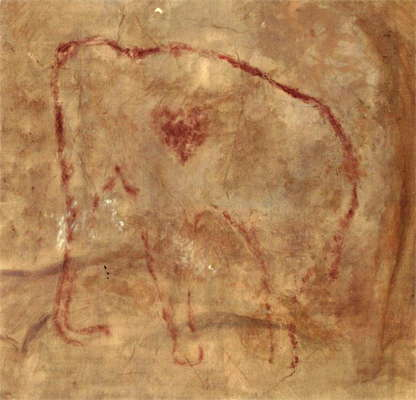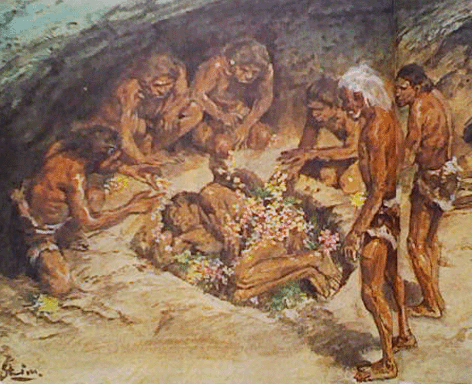仏像を巡って 25: 中国の神像の始まり 3
< 1. the soldier figures in the mausoleum of the first Qin
Emperor in the 3rd century B.C. >
< 1. 兵馬俑、秦の始皇帝陵墓、前3世紀 >
This time, we keep
track of a change of human statues from prehistoric age to about the first
century A.D.
Various feelings were
included in these human statues.
今回は、先史時代から漢の時代(紀元前後)までの人物表現の変遷を追います。
これら人物表現には様々な想いが込められていました。
About the soldier
figures in the mausoleum of the first Qin Emperor
The statue A of Fig. 1
that is one of 8000 statues became an epoch-making expression of the human
statue in Chinese history.
The appearance of these
statues is different each, it is very realistic and these heights are 1.8-2 m.
The burial goods (statue M of fig. 6) in
the Imperial mausoleum of subsequent Han dynasty had many numbers, but looked
inferior in small size.
But after that, many very
expressive human statues started to be made.
Before that, human statues had been
buried to grave of a lord, but it was rare and was very simple.
In the earlier years,
humans and cattle were killed and buried.
秦の兵馬俑について
図1のA像は中国史上、人物像の画期となった兵馬俑8000体(武士像)の一つです。
この塑像群は、一体一体が風貌を異にし、身長は1.8~2mもあり、非常に写実的です。
これに続く漢王朝の陵墓の副葬品(図6のM像)は、数こそ多いが小型で見劣りするものでした。
しかし、後に表情豊かな人物像が作られるようになった。
これ以前も人物像が主君の墳墓に埋葬されたことがあったが、稀であり、簡素なものでした。
さらに古くは人間や家畜が殺されて殉葬されていました。
Let us keep track of
a change of human statues
人物表現の変遷をたどります
< 2. the map
indicating the excavation site of these fig. >
< 2.図像の出土位置を示す地図 >
< 3. the earliest type
of human images >
< 3. 最初期の人物表現 >
Fig. B: a bowl made of painted
pottery of about 4500 B.C.
A fish image with a human head drawn
inside it means a hope of descendant prosperity that is based on fish laying a
lot of eggs.
Fig. C: a human statue made of stone with a height
of 8.6 cm in about 4500 B.C.
This is a burial good,
and seems to be Sherman by the clothes and the style, and had been sewed on a
clothing of a religious leader.
Fig. D: a nude statue in
4000-3000 B.C.
This clay figure is
suggestive of Venus.
This type made of stone
was excavated here from about 6000 B.C., and was the earliest nude statue in
China.
図B:人面魚文彩陶盆、仰韶文化半坡遺跡、紀元前4500年頃。
人面魚文は魚がたくさん卵を生むことにあやかって子孫繁栄を願って描かれた。
図C:玉人、玉製、高さ8.6cm、安徽省含山県凌家灘遺跡、紀元前3500年頃。
これは副葬品で、シャーマンを想わせる服装と姿勢をしており、宗教指導者の衣類に縫い付けられていたらしい。
図D:裸婦像、紅山文化、紀元前4000~3000年頃。
これは氷河期のビーナス像を連想させる妊婦の土偶です。
この地域で、紀元前6000年頃から石製の裸婦像が出土しており、中国では最初期のものです。
< 4. three figures of
stone or bronze >
< 4. 玉と青銅器の図像 >
Fig. E: a ritual implement
made of stone in about 3100 B.C.
This was a bracelet of
priest at first, and after that, came to play a central role in rituals as
implement.
Some animal heads have been engraved on
the surface.
In animal heads of the
lower side, the eyes and mouth are very clear.
図E:玉琮、玉製、良渚文化、紀元前3100年頃。
玉琮は初め司祭の腕輪だったが、祭祀の置物として中心的役割を果たすようになった。
その表面に神人獣面文が施されている。
下段の獣面は目と口が明瞭です。
Fig. F: a bronze ware in 1300-1050 B.C.
This bronze ware had
been for boiling, but was for rituals and a burial good of the upper class.
Such animal heads often were engraved on
this type of wares.
Its figure consists of a
central nose, symmetrical big eyes, ears like nail expanding outward, great
horns bending overhead, and a greatly below opened mouth.
It seems to have been a charm against
evil.
Fig. G: a bronze ware originally used for serving
wine of 1300-1050 B.C.
Dragons and animals are
engraved on the surface of the tiger figure, and it is holding a human being.
In those days, the people thought that
the power of animals was necessary for the contact between people and sky,
ground, and divine spirit.
図F:劉鼎、青銅器。殷後期(紀元前1300~1050年頃)。
この器は煮炊き用だが、これら青銅器は祭祀用であり上層階級の副葬品でした。
この手の器には獣面文がよく描かれている。
それは真ん中に鼻、左右対象に大きな眼、外側に広がり爪状になった耳、頭上に大きく曲がった角、下には大きく開いた口からなる。
これは魔除けの意味があったと考えられる。
図G:食人虎卣、青銅器。殷後期。
これは祭器用の酒器で、虎の表面には龍や獣面文が描かれ、人間を抱えている。
当時、人々は天と地、神霊や死霊との交流には動物の力が必要だと考えたようだ。
< 5. statues made of bonze in 2000-1000 B.C. >
< 5. 三星堆遺跡の青銅像、四川省、紀元前2000~1000年 >
There were not such
human statures, mask and head in other cultures of the same era.
The face was strongly emphasized such as
these eyes, ears and mouth.
The people buried these figures in the
underground for worshipping ancestor God.
Fig. H: a shaman statue
with a height 1.8 m.
この遺跡の人頭像や仮面、立人像は、同時期の夏と殷の文化には無いものです。
その人面は目や耳、口などが非常にデフォルメされており、仮面では目が棒状で飛び出したものもある。
人々は祖先神を祀る為にこのような像や仮面を造り地中に埋めた。
図H: シャーマン像、人像高1.8m、祭祀と関係した特徴的な手をしている。
< 6. two statues with
wing and a clay dolls >
< 6. 羽人と俑 >
Fig. K: the statue with wing made of wood has been
buried in a grave of 4th century B.C.
The statue stands on a bird on a beast.
The upper body is a naked human, the
mouth is a bill, and the lower body is a bird.
These statues with wing
showed mountain hermit in old books.
Fig. L: a statue with wing made of bronze of from
202 B.C. to 8 century A.D.
Fig. M: a woman statue made of painted pottery in
the 2nd century B.C.
This is one of the things that were
buried in large quantities in the mausoleum of a Han emperor.
図K: 羽人、木製漆仕上げ、湖北省荊州市、戦国時代の楚の墓、紀元前4世紀。
羽人は獣形の台座の鳥の上に立っている。
上半身は裸の人間だが、口は嘴で、下半身は鳥の姿をしている。
羽人は戦国時代の神話と地誌の書「山海経」に書かれており、仙人を示した。
図L: 羽人、青銅製、陕西省西安出土、前漢時代(前202~後8年)。
図M: 彩色女俑、高さ63cm、漢陽陵考古陳列館蔵、前漢時代(前2世紀)。
これは漢の皇帝の陵墓に大量に陪葬されていたものの一つ。
Development of human
statue
In ancient times, people emphasized the
superior characteristic that people were in awe of animal at, and made the
statues.
The statues like human had been buried
almost always.
This was for using after the death of
their load, and for respecting an ancestral spirits.
The most important thing
is the people did not express the object of their belief as realistic human
image, even as people probably had the arts of realistic expression in those
days.
On the next times, we
look at the forerunner of god statue.
人物像の発展
古くは、動物の優れた特徴や畏敬の対象を強調して像を作った。
人間らしい像の多くは埋葬されていたもので、主君の死後に役立つ為か、祖先の霊を敬う為に造ったようです。
重要なことは、当時、人々はおそらく写実的な表現力を持ちながら、信仰の対象を写実的な人間として表現していないことです。
次回は、神像の前触れについて見ます。













